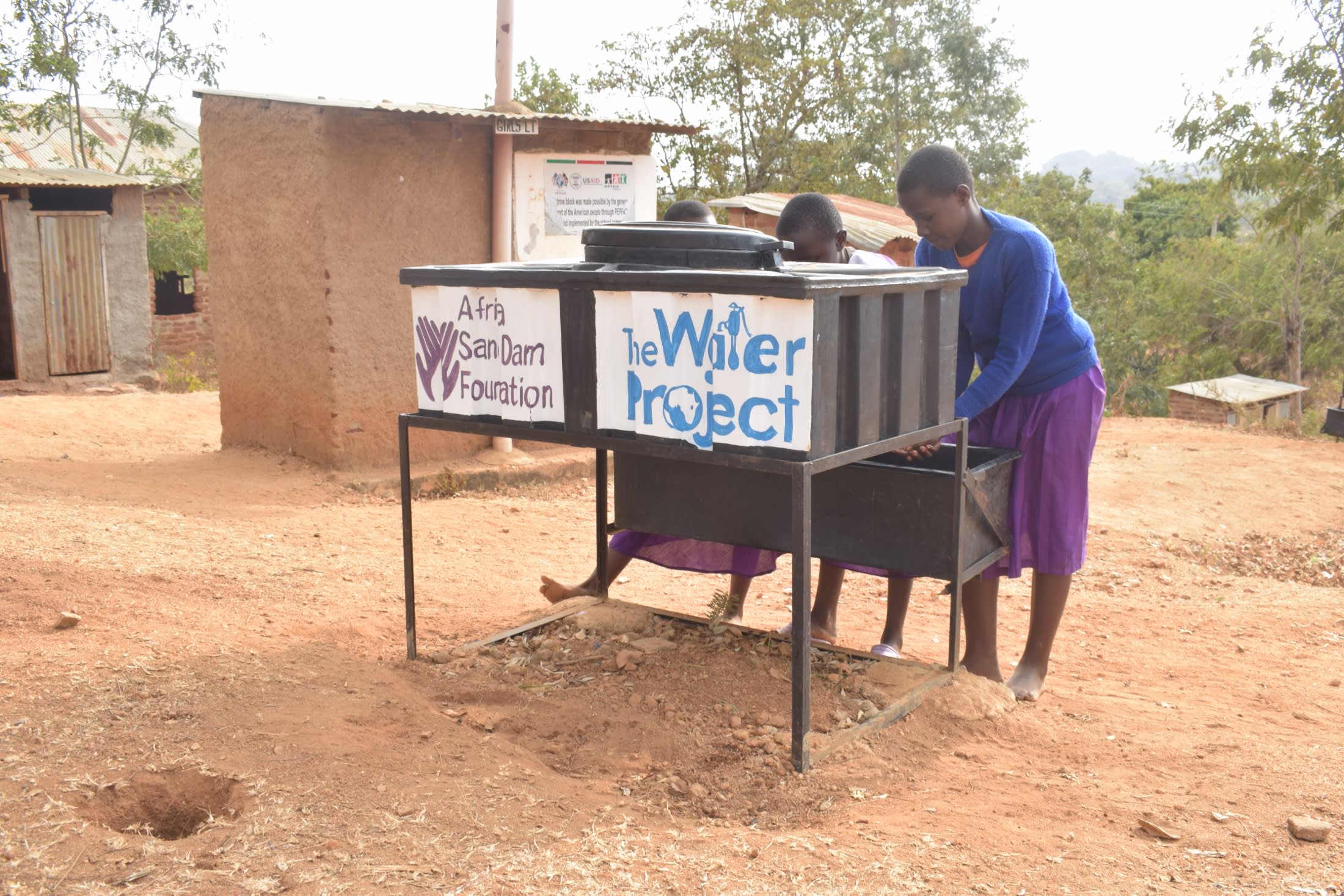The more than 150 students at Kwa Kyelu Primary School bring small containers filled with water each day. The students leave their containers outside of the classrooms so that it can be used to meet the school's various needs - from water to cook vegetables for lunch to water for cleaning classrooms. Some pupils also carry a second small container to use for drinking water.
The children are required to bring water to school. This is a burden for them because the water must be carried in addition to their school bag and firewood for the school kitchen.
To make matters worse, the water they bring is unsafe for human consumption. Students and their parents collect water from open scoop holes in the Tyaa riverbed. Most families have to travel more than two kilometers to get this water to meet their daily needs. During the dry season, people must travel even further to get water.
This water is dirty and open to contamination from animal waste and nearby farm runoff. This exposes the school community to various health risks and waterborne diseases that come with drinking unsafe water.
"Life in this school is not easy," said Teacher Alice Muthie.
"The prevailing conditions here are below average because we lack a reliable clean water supply. The water brought by the students has been endangering the health of the school community members."
School facilities such as latrines and classes are very dirty because the school lacks water. This exposes students to poor learning conditions.
About the School
Kwa Kyelu Primary School was started in the year 1987 by local community members from Kwa Kyelu Village of Kitui County. The school was later taken up by the government to operate under the Migwani District Education Board. The school has no formal sponsors and has grown through the support of parents, the Kitui County Government, and the national government.
The school is found in a peaceful, rural area that is dry. Most of the school's buildings look old.
Rainwater Catchment Tank
We will build a 104,000-liter rainwater catchment tank for this school. This water will benefit the students, teachers, and supplementary staff. Parents will mobilize the materials needed for construction, such as sand and stone. They will also lend some strong arms to help with the actual construction.
The huge capacity of this tank makes the others look tiny in comparison; 104,000 liters should be enough water to carry students and staff through the entire dry season. As soon as the tank has time to cure, it can begin to collect rainwater for drinking, cooking, and cleaning!
Training
Students and staff will be trained for one day. Those in attendance will form a school health club that will promote good hygiene and sanitation practices both at school and home. They will learn all of the steps to proper handwashing, how to treat water, and how to keep their environment clean. The school will also be taught how to best oversee and maintain their new rainwater catchment tank and handwashing stations.
Handwashing Stations
Three handwashing stations will be delivered at the project’s completion. These are 1,000-liter plastic tanks fitted with four taps. The health club and school management will be responsible for making sure tanks are filled with water and that a cleaning agent such as soap or ash is available.

 Rainwater Catchment
Rainwater Catchment
 Rehabilitation Project
Rehabilitation Project





























